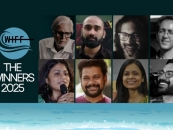
Apathy, Waste And The Rhetoric Of Concern
by Deepa Bhalerao September 10 2015, 6:29 pm Estimated Reading Time: 8 mins, 11 secsRafi Nagar, Deonar, Mumbai
April 2012
The auto-rickshaw stopped at the corner of the narrow road. A large mound of garbage marked the entrance of the place I was searching for, inside a densely populated neighbourhood. Houses were squeezed together like tightly packed boxes, each approximately equal in size, with walls that appeared malleable.
I made my way inside the tiny lanes, treading carefully so as to not step in a puddle or brush against a passer-by. The path was made of plastic bags flattened by months or maybe years of footsteps, disintegrating paper and embedded goat and cattle bones. The stench was overwhelming leaning on the edge of unbearable.
The ‘house’ I was looking for, was a tiny shack covered in blue plastic, with the most meagre of belongings. The 8 feet by 8 feet space included a kitchen and a bathing area.
This home was in a locality where the poorest of the poor make their home. It is situated between the city’s animal slaughter house and the city’s largest dumping yard. It is a locality teeming with people who cannot find any other employment, look for a livelihood. It bustles with activity from the early hours of the morning. Women and children as young as 6 years of age set out to rummage through the mounds of garbage trying to find plastic, metal and other items that could be of resale value. They work from 4 am to 9 am in the morning and from 5 pm to 7 pm in the evening. In the late morning hours, they sell the collected material to shop owners who send it ahead for recycling. Long hours in the sun and very dangerous routine make it one among the most hazardous jobs in the world. There is a constant fear of badly driven garbage trucks, sharp materials in the garbage, and the direct contact with waste, a lot of which could be toxic in nature.
Through the course of the day, I spoke to five women at length and also sat through a women’s committee meeting.
After my interviews were done for the day, and I made my way out of the maze of lanes, waving away swarms of flies, I was filled with despondency at the sight of toddlers sitting around or playing in the filth around their homes.
………………………………………………………………………………………………………………………………………………………………….
Listening to the life histories of the women who have made their home here was, without doubt, a life changing experience for me. Even as I marvelled at how these women had made attempts at their own economic upliftment, and the role that was being played by microfinance initiatives, I could not help but wonder what had led to the creation of such a dismal situation in the first place.
(Ref- http://internationalreportingproject.org/stories/view/deonar-dumping-grounds-in-mumbai)
Why do we still have a refuse dump when waste treatment is the need of the hour? Where are the innovations that could change things at this basic level? Why is urban planning not including the important issue of transforming this area into a more environment friendly, sustainable proposition? And, most importantly, how do we, as a society still allow humans including children, to engage in the dangerous work of picking huge garbage mounds for recyclable material?
(Ref- https://www.youtube.com/watch?v=CCqUH-9wHK4)
This scenario seemed to defeat all the notions of our claims to being an equitable society which protects basic human rights.
In my quest for this one particular question, I spoke to many different people. Environmental engineers said that the technology has been there for many years, and that solid waste treatment solutions are available.
(Ref- https://www.youtube.com/watch?v=fj-3v_CaSQM).
Social workers said that community mobilisation is possible, but people need to be given alternatives, which aren’t always there, and so those who get into the work of gathering scrap and plastic in the garbage dump continue to do it.
The municipal workers said that they were only following orders. The administrators stated that such a decision to be taken by the elected members of the society. The urban planners lament that plan after plan gets made, but things do not move forward beyond that stage.
This is the vicious circle. We know the problem, we have the solution, but we have become frozen in our response and things are not moving from status quo.
This is just one example of how the collective problem of a society awaits resolution.
“Sustainable Development is development that meets the needs of the present without compromising the ability of future generations to meet their own needs.”
World Commission on Environment and Development, 1987
Sustainable development promotes the idea that social, environmental, and economic progress, are all attainable within the limits of our earth’s natural resources. Sustainable development approaches everything in the world as being connected through space, time and quality of life.
(Source- http://www.sustainabledevelopmentinfo.com/the-definition-of-sustainable-development/)
There are many definitions of sustainable development, each elaborating the term in different contexts. Sustainability translates itself in a wide variety of ways depending on the lens through which it is seen. Complex questions arise in the quest to find answers, and the most obvious of solutions have a catch, making them difficult, if not impossible to implement.
In the context of social development, which is an overarching theme, sustainability gets entangled in many threads that have the capacity to become nooses. Moreover, it is interesting to note that it is at the most basic level that there is general apathy resulting in failures.
Systems that were sustainable like the village economy, are rapidly breaking down. An urban and globalized world is the future. Populations are aggregating more rapidly than the available infrastructure can cope with. As a result, we have systems that are stretched beyond their capacity and crumbling under the pressure. Environmental impact is not even a consideration sometimes.
As the populations shift from villages to cities, a lot of issues need attention. Drinking water supply, solid and household waste disposal, quality of air, housing, transport and recreation are the first among many others. Ignored, these have the potential to become disasters on their own, or contribute to natural occurrences and exaggerate the effect on human populations. The floods of 2004 are a grim reminder, as are the water-logging situations faced every monsoon. Regular outbreaks of waterborne diseases and the constant increase in airborne ailments owing to pollution corroborate the same story.
Intense urban crowding puts a pressure on existing systems. Strengthening and upgrading public infrastructure needs to be a priority for the government, and can only be achieved through a steady involvement by the community. Every paradigm shift in society must be supported by intense backend solutions. Migration patterns need to be studied and measures to check migration require to be taken. Support systems require to be planned, designed and implemented for our numerous cities reeling under the burden of more people than they are equipped to handle.
We are a part of a fragile ecosystem which is affected by the slightest imbalance. Rapid advances in society have led to increased consumerism and in the process of chasing those comforts which makes life easier, we are also choosing solutions that are harmful in the long run.
In order to recognise and understand where we as a society are headed, there needs to be a discussion on all available public platforms. Thought leaders from different disciplines need to come together to initiate and sustain a dialogue which leads to a collective understanding of the current situation and indicates the way forward.
(Ref- http://www.moef.nic.in/divisions/ic/wssd/doc4/consul_book_persp.pdf)
Every sustainable solution has a tangible translation. The need of the hour is to accept and adopt it. And, like all big problems, the first step towards finding a solution is to spell it out. Perhaps it is time that the ones who have taken upon themselves to be the voice of the people, make the first move. Everything else will follow.
References-
- Deonar Dumping Grounds in Mumbai- Where scavengers are in life-or-death-race for survival- India 2013- Jennifer Uloma Igwe
http://internationalreportingproject.org/stories/view/deonar-dumping-grounds-in-mumbai
- Deonar Dumping Ground- Wikipedia Page
https://en.wikipedia.org/wiki/Deonar_dumping_ground
- City’s Edge (2011) – https://www.youtube.com/watch?v=CCqUH-9wHK4
- Waste Pickers – the Invisible Environmentalists-
https://www.youtube.com/watch?v=fj-3v_CaSQM
- Ragpickers suffer in silence for Rs 50 a day in Mumbai
- Eastern Mumbai engulfed in smog as day-long fire rages at garbage dumping ground
- Sustainable Development Knowledge Platform – UN
https://sustainabledevelopment.un.org/?menu=1300
- Sustainable Development – A critical review
http://atree.org/sites/default/files/pubs/slele/journal-publications/Lele_SusDev_review_WDev.pdf
- Sustainable Development In India- Perspectives
http://www.moef.nic.in/divisions/ic/wssd/doc4/consul_book_persp.pdf
- Why India Needs to Get Its Urban Planning Act Together-
- The biggest flaw in Mumbai’s Development Plan: it misunderstands both development and planning-




-173X130.jpg)
-173X130.jpg)
-173X130.jpg)
-173X130.jpg)
-173X130.jpg)

-173X130.jpg)
